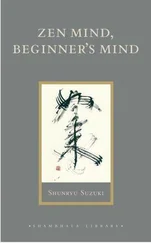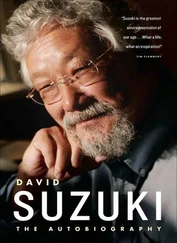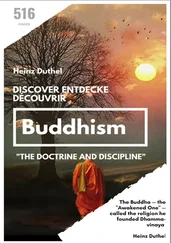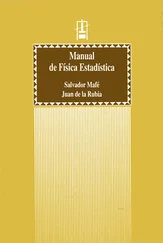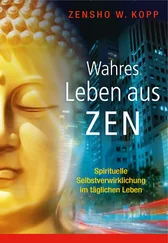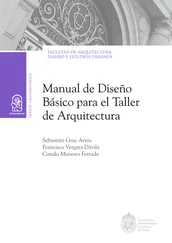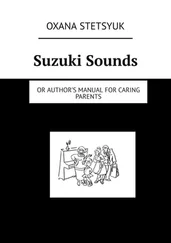Teitaro Suzuki - Manual of Zen Buddhism
Здесь есть возможность читать онлайн «Teitaro Suzuki - Manual of Zen Buddhism» весь текст электронной книги совершенно бесплатно (целиком полную версию без сокращений). В некоторых случаях можно слушать аудио, скачать через торрент в формате fb2 и присутствует краткое содержание. Жанр: Религиоведение, Религия, Руководства, на английском языке. Описание произведения, (предисловие) а так же отзывы посетителей доступны на портале библиотеки ЛибКат.
- Название:Manual of Zen Buddhism
- Автор:
- Жанр:
- Год:неизвестен
- ISBN:нет данных
- Рейтинг книги:3 / 5. Голосов: 1
-
Избранное:Добавить в избранное
- Отзывы:
-
Ваша оценка:
- 60
- 1
- 2
- 3
- 4
- 5
Manual of Zen Buddhism: краткое содержание, описание и аннотация
Предлагаем к чтению аннотацию, описание, краткое содержание или предисловие (зависит от того, что написал сам автор книги «Manual of Zen Buddhism»). Если вы не нашли необходимую информацию о книге — напишите в комментариях, мы постараемся отыскать её.
Manual of Zen Buddhism — читать онлайн бесплатно полную книгу (весь текст) целиком
Ниже представлен текст книги, разбитый по страницам. Система сохранения места последней прочитанной страницы, позволяет с удобством читать онлайн бесплатно книгу «Manual of Zen Buddhism», без необходимости каждый раз заново искать на чём Вы остановились. Поставьте закладку, и сможете в любой момент перейти на страницу, на которой закончили чтение.
Интервал:
Закладка:
The boy is not to separate himself with his whip and tether,
Lest the animal should wander away into a world of defilements;
When the ox is properly tended to, he will grow pure and docile;
Without a chain, nothing binding, he will by himself follow the oxherd.
VI. Coming Home on the Ox's Back
The struggle is over; the man is no more concerned with gain and loss. He hums a rustic tune of the woodman, he sings simple songs of the village-boy. Saddling himself on the ox's back, his eyes are fixed on things not of the earth, earthy. Even if he is called, he will not turn his head; however enticed he will no more be kept back.
Riding on the animal, he leisurely wends his way home:
Enveloped in the evening mist, how tunefully the flute vanishes away!
Singing a ditty, beating time, his heart is filled with a joy indescribable!
That he is now one of those who know, need it be told?
VII. The Ox Forgotten, Leaving the Man Alone
The dharmas are one and the ox is symbolic. When you know that what you need is not the snare or set-net but the hare or fish, it is like gold separated from the dross, it is like the moon rising out of the clouds. The one ray of light serene and penetrating shines even before days of creation.
Riding on the animal, he is at last back in his home,
Where lo! the ox is no more; the man alone sits serenely.
Though the red sun is high up in the sky, he is still quietly dreaming,
Under a straw-thatched roof are his whip and rope idly lying.
VIII. The Ox and the Man Both Gone out of Sight
[1]All confusion is set aside, and serenity alone prevails; even the idea of holiness does not obtain. He does not linger about where the Buddha is, and as to where there is no Buddha he speedily passes by. When there exists no form of dualism, even a thousand-eyed one fails to detect a loop-hole. A holiness before which birds offer flowers is but a farce.
All is empty—the whip, the rope, the man, and the ox:
Who can ever survey the vastness of heaven?
Over the furnace burning ablaze, not a flake of snow can fall:
When this state of things obtains, manifest is the spirit of the ancient master.
IX. Returning to the Origin, Back to the Source
From the very beginning, pure and immaculate, the man has never been affected by defilement. He watches the growth of things, while himself abiding in the immovable serenity of nonassertion. He does not identify himself with the maya-like transformations [that are going on about him], nor has he any use of himself [which is artificiality]. The waters are blue, the mountains are green; sitting alone, he observes things undergoing changes.
To return to the Origin, to be back at the Source—already a false step this!
Far better it is to stay at home, blind and deaf, and without much ado;
Sitting in the hut, he takes no cognisance of things outside,
Behold the streams flowing—whither nobody knows; and the flowers vividly red—for whom are they?
X. Entering the City with Bliss-bestowing Hands
His thatched cottage gate is closed, and even the wisest know him not. No glimpses of his inner life are to be caught; for he goes on his own way without following the steps of the ancient sages. Carrying a gourd [2]he goes out into the market, leaning against a staff [3]he comes home. He is found in company with wine-bibbers and butchers, he and they are all converted into Buddhas.
Bare-chested and bare-footed, he comes out into the market-place;
Daubed with mud and ashes, how broadly he smiles!
There is no need for the miraculous power of the gods,
For he touches, and lo! the dead trees are in full bloom.
The Ten Oxherding Pictures, II.
1. Undisciplined
With his horns fiercely projected in the air the beast snorts,
Madly running over the mountain paths, farther and farther he goes astray!
A dark cloud is spread across the entrance of the valley,
And who knows how much of the fine fresh herb is trampled under his wild hoofs!
2. Discipline Begun
I am in possession of a straw rope, and I pass it through his nose,
For once he makes a frantic attempt to run away, but he is severely whipped and whipped;
The beast resists the training with all the power there is in a nature wild and ungoverned,
But the rustic oxherd never relaxes his pulling tether and ever-ready whip.
3. In Harness
Gradually getting into harness the beast is now content to be led by the nose,
Crossing the stream, walking along the mountain path, he follows every step of the leader;
The leader holds the rope tightly in his hand never letting it go,
All day long he is on the alert almost unconscious of what fatigue is.
4. Faced Round
After long days of training the result begins to tell and the beast is faced round,
A nature so wild and ungoverned is finally broken, he has become gentler;
But the tender has not yet given him his full confidence,
He still keeps his straw rope with which the ox is now tied to a tree.
5. Tamed
Under the green willow tree and by the ancient mountain stream,
The ox is set at liberty to pursue his own pleasures;
At the eventide when a grey mist descends on the pasture,
The boy wends his homeward way with the animal quietly following.
6. Unimpeded
On the verdant field the beast contentedly lies idling his time away,
No whip is needed now, nor any kind of restraint;
The boy too sits leisurely under the pine tree,
Playing a tune of peace, overflowing with joy.
7. Laissez Faire
The spring stream in the evening sun flows languidly along the willow-lined bank,
In the hazy atmosphere the meadow grass is seen growing thick;
When hungry he grazes, when thirsty he quaffs, as time sweetly slides,
While the boy on the rock dozes for hours not noticing anything that goes on about him.
8. All Forgotten
The beast all in white now is surrounded by the white clouds,
The man is perfectly at his ease and care-free, so is his companion;
The white clouds penetrated by the moon-light cast their white shadows below,
The white clouds and the bright moon-light—each following its course of movement.
9. The Solitary Moon
Nowhere is the beast, and the oxherd is master of his time,
He is a solitary cloud wafting lightly along the mountain peaks;
Clapping his hands he sings joyfully in the moon-light,
But remember a last wall is still left barring his homeward walk.
10. Both Vanished
Both the man and the animal have disappeared, no traces are left,
The bright moon-light is empty and shadowless with all the ten-thousand objects in it;
If anyone should ask the meaning of this,
Behold the lilies of the field and its fresh sweet-scented verdure.
V. FROM THE JAPANESE ZEN MASTERS
Dai-o (1235–1308), Daito (1282–1336), and Kwanzan (1277–1360) are the three outstanding luminaries in the history of the Japanese Rinzai school of Zen. All the masters of this school now in Japan are their descendants. Dai-o went to China and studied under Kido (Hsu-t'ang) in southern China, whose high expectations of the foreign disciple were fully justified as we can testify in the Japanese history of Zen. Daito is the founder of Daitokuji monastery and Kwanzan that of the Myoshinji, both Kyoto. Muso (1273–1351) who followed another lineage of the Zen masters was versatile in artistic accomplishments. There are many noted gardens designed by him which are still well preserved. He was the founder of many Zen temples throughout Japan which the most notable one is Tenryuji at Saga, near Kyoto. Hakuin (1685–1768) is the father of modern Rinzai Zen. Without him it would be hard to tell the fate of Zen in Japan. He was no founder of a temple of any ecclesiastical importance; he lived his unpretentious life in a small temple in Suruga province, devoting himself to the bringing up of Zen monks and to the propagation of his teaching among laymen.
Читать дальшеИнтервал:
Закладка:
Похожие книги на «Manual of Zen Buddhism»
Представляем Вашему вниманию похожие книги на «Manual of Zen Buddhism» списком для выбора. Мы отобрали схожую по названию и смыслу литературу в надежде предоставить читателям больше вариантов отыскать новые, интересные, ещё непрочитанные произведения.
Обсуждение, отзывы о книге «Manual of Zen Buddhism» и просто собственные мнения читателей. Оставьте ваши комментарии, напишите, что Вы думаете о произведении, его смысле или главных героях. Укажите что конкретно понравилось, а что нет, и почему Вы так считаете.

